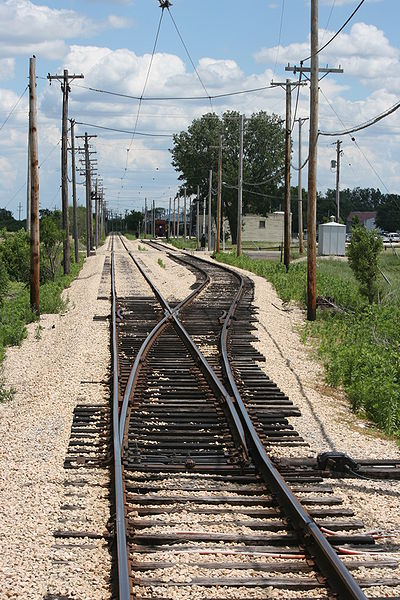For this letter, we’ve attached a brief summary of the investment highlights for the first quarter along with our analysis. We hope you find this useful.
Two major economic developments not covered in this attachment we thought worth mentioning are:
Landmark Health Care Legislation. Congress and the Obama administration finally managed to pass the much debated health-care bill. We believe we will see further attempts to control the costs of health-care in the US, including an emphasis on preventive medicine and result-focused care. These additional efforts and the implementation of various phases of the bill recently passed will impact the health-care system for years to come. Also important to note is that the successful passage of health care related legislation leaves Congress and the Obama administration free to focus on the equally important issue of financial reform. On that note, we believe the proposed ‘Volcker rule’ is a good start and is the appropriate equivalent of Glass-Steagall for our age and the infrastructure of modern finance. We would also like to see reformed compensation criteria across the financial industry and large corporations, but that is a corporate governance concern best saved for another letter.
Withdrawal of Economic Stimulus. The other major theme we expect to impact our economy over the rest of the year is the withdrawal of extraordinary fiscal and monetary stimulus programs put in place during the crisis. Various measures by the Fed, European and Asian central banks to provide liquidity support to banks and markets will be withdrawn over the course of the next several months. Numerous stimulus programs across the world will also be removed over the course of this year, including bank loan fueled infrastructure spending in China. As the global economy has these crutches removed, we will watch with great interest to see how severe the damage to core private enterprise has been. We will also keenly track developments in trade agreements since various countries have enacted or are considering trade barriers and currency related moves to protect key industries and exporters.
We look forward to speaking with you during the quarterly review.
2010 Q1 Highlights
Equities. The S&P 500 started the year at 1115 and began a moderate sell-off in mid-January, bottoming out at an intraday low of 1044 on February 8th before rallying to a new 52 week high on March 25th, peaking at an intraday level of 1180. The stock market rally is now more than a year old and much of the recent gains have occurred on weak volume, indicating a lack of conviction from investors.
Our view: We remain skeptical of this rally and believe stock prices have gotten ahead of themselves and are currently over-valued. We would like to see stronger underlying economic data emerge (lower unemployment, higher consumer confidence, improved housing numbers, etc) before becoming more bullish on stocks. For now, we continue to believe a defensively positioned portfolio is prudent.
Interest Rates. On Feb 18th, the Federal Reserve raised the discount rate (the rate at which banks pay to borrow money from the central bank) by 25 basis points to .75%. This was viewed as a relatively positive event, since it meant that the Fed felt confident enough in the economic recovery to start charging banks more to borrow money. The more widely followed Fed Funds rate (the overnight rate depository institutions charge each other to borrow money in order to meet reserve requirements) remains at historically low levels (effectively 0%).
Our view: We don’t expect the Fed to raise the Fed Funds rate until the 4th quarter of 2010 (at the earliest) as the consensus amongst the FOMC will likely want to wait until the economic picture shows stronger signs of a sustained recovery.
Taxable Bonds. Taxable bonds have continued to perform well, particularly in the high yield (lower quality) space. The high yield rally has corresponded with the stock market rally as investors continue to feel more comfortable taking on risk. As a result, many high yield bonds are trading at levels virtually unfathomable a year ago.
Our view: In anticipation of a likely rate hike coming at some point in the next 6-12 months, we are positioning client portfolios to be on the shorter end of the yield curve (preferring short-term bonds to long term bonds). For bond funds, we prefer the following categories: short/ultra short duration, international and inflation protected. For individual bonds, we see the most value in BBB rated manufacturing, energy and consumer goods names. We also like stepped note bonds/CDs as they provide a hedge against rising interest rates (which are pretty much inevitable given where rates are now, it’s just a question of when).
Municipal Bonds. On March 16th, Moody’s announced they will shift to a long anticipated universal ratings scale in an effort to make it easier for investors to compare ratings between corporate and municipal bonds. This move will likely boost the ratings on many of the municipal bonds they cover. These higher ratings will not be viewed as an upgrade, but rather a recalibration to the new scale.
Our view: With record federal government deficit levels and the recent passage of the Obama health care bill, we believe federal income taxes will likely be raised in order to offset these costs. We believe municipal bonds remain attractive due to their tax status (federally tax exempt and occasionally state/local exempt). We prefer high quality general obligation bonds (bonds backed by the taxing authority of a state or municipality) and essential service revenue bonds (bonds backed by the revenues generated by utilities, universities or water and sewer projects). We believe default risk (particularly for general obligation bonds) is low given the senior status debt service payments enjoy in most municipal budgets (in California, for example, bond holders are junior only to the public school system in terms of how tax revenues are spent).
Sovereign Debt. The major story this quarter was Greece and its escalating budget crisis. A tentative bailout agreement was reached in late March, backed by the European Union and the IMF (International Monetary Fund). The concern here is that this will set a bad precedent as other countries in the European Monetary Union with debt problems (of which there are many, notably Portugal, Italy, Ireland and Spain) will expect similar assistance from the IMF for debt relief. Meanwhile, back home, US treasury rates have steadily crept up this quarter as the government continues to issue record amounts of debt and the market requires a higher yield payout to own this debt.
Our view: We expect treasury rates to continue this upward trend. We prefer short dated treasuries to intermediate and longer term treasuries. We believe the situation in Greece has not been fully resolved yet and expect more bailouts/aid packages will be necessary to shore up the debt problems for some of the other Euro zone countries mentioned above. We believe the European Monetary Union faces a grave crisis since the common currency (the Euro) leaves sovereign states unable to devalue when faced by a budget crisis. The solution is either greater political and budgetary synchronization, or accepting that EU countries may default and defining a mechanism for them to do so without impacting the surviving members. The uncertainty and perceived lack of a resilient solution is weighing on the Euro. We believe the Euro will continue to weaken against the US Dollar until these problems are properly addressed.

 We are frequently amused by the myriad explanations pundits present for any moves in the market. Our view has always been that single day moves are largely inexplicable, and that it often takes investors time to incorporate events into their thought-process, and to translate them into action. An example is the market rose yesterday in the face of much bad economic news. The explanation from pundits was that investors were celebrating the potential victory of a Republican candidate in the Massachusetts special election to fill the senate seat left vacant after Ted Kennedy’s death. Numerous commentators noted that “gridlock in Washington is positive for wall street”. The thinking is that government action creates uncertainty, this leads to businesses spending time and resources trying to compensate for changing rules, and this slows down economic activity and lowers earnings.
We are frequently amused by the myriad explanations pundits present for any moves in the market. Our view has always been that single day moves are largely inexplicable, and that it often takes investors time to incorporate events into their thought-process, and to translate them into action. An example is the market rose yesterday in the face of much bad economic news. The explanation from pundits was that investors were celebrating the potential victory of a Republican candidate in the Massachusetts special election to fill the senate seat left vacant after Ted Kennedy’s death. Numerous commentators noted that “gridlock in Washington is positive for wall street”. The thinking is that government action creates uncertainty, this leads to businesses spending time and resources trying to compensate for changing rules, and this slows down economic activity and lowers earnings.